- Home
- Robert Silverberg
To Open the Sky
To Open the Sky Read online
To Open The Sky
Under Vorst humankind had dared and achieved much: the reshaping of an entire planet, the genetic alteration of the race to fit another, even the promise of immortality. But it was not enough; even Eternity is too small for mankind imprisoned in one star-system, and Vorst would risk it all for the chance to “punch a hole in the sky!”
Breathtaking in scope, TO OPEN THE SKY is Robert Silverberg’s vast epic of the human race at the threshold of discovery—of a future time as heavy with destiny as that long-ago year when campfires were first seen in the gorges of Africa…
By The Same Author
HAWKSBILL STATION
TO LIVE AGAIN
ALPHA 6
(Ed.)
ALPHA 8
(Ed.)
EPOCH
(Ed. with Roger Elwood)
Copyright © 1967, 1978, by Robert Silverberg
All rights reserved
Published by arrangement with the author’s agent
All rights reserved which includes the right
to reproduce this book or portions thereof in
any form whatsoever. For information address
Berkley Publishing Corporation
200 Madison Avenue
New York, New York 10016
SBN 425-03810-6
BERKLEY MEDALLION BOOKS are published by
Berkley Publishing Corporation
200 Madison Avenue
New York, N. Y. 10016
BERKLEY MEDALLION BOOK ® TM 757,375
Printed in the United States of America
Berkley Edition, JULY, 1978
For Frederik Pohl
Contents
INTRODUCTION
ONE
Blue Fire 2077
TWO
The Warriors of Light 2095
THREE
Where the Changed Ones Go 2135
FOUR
Lazarus Come Forth 2152
FIVE
To Open the Sky 2164
To Open the Sky: Introduction
NEARLY EVERY science fiction writer fools around, at some stage in his career, with a “future history” chart. Robert A. Heinlein was the first to do it, so far as I know, blocking out an outline of the next six or seven hundred years and making most of his fiction of the 1940’s conform to it. Heinlein’s chart has been published as endpaper material in many of his books. Poul Anderson has a similar scheme for his vision of the future, and I think Larry Niven works from one, and…well, I never did, mainly because I’m a restless man and I’d quickly get weary of the checking and rechecking that would be necessary in order to make a long series with common background internally consistent.
But I did toy with the notion briefly, back in 1957. Using a torn-out notebook sheet with ruled lines, I scribbled a chronological scenario covering several hundred years of the development of a pseudoscientific religious cult. Where that sheet of paper is today, I have no idea. My files for that period were substantially disimproved by the fire I had in 1968, and my move to California from New York a couple of years later did not notably benefit the condition of what had survived. I think I still may have it somewhere, and if I could find it I would quote it here, as a case history in the genesis of ideas in fiction. As it is, all I can remember of it is a single sentence, which was this:
“AD 2150. Rise of the apostate heresiarch.”
What a lovely gaudy phrase that is! The apostate heresiarch! I suspect that the whole outline was like that. My plan was to write the stories as a group of novelets for Infinity, the excellent but ephemeral science-fiction magazine edited by Larry T. Shaw. But Infinity’s lifespan proved finite too quickly. The magazine died in 1958, before I had had a chance to get around to the apostate heresiarch and his colleagues, and I put the sheet of paper away to marinate in a drawer where I used to keep all sorts of notes on potential story projects.
And there it sat for six years, during which time I gave up the writing of science fiction entirely, partly out of shame over the junk I had (mostly) been writing and partly out of distress over the difficulties I was having finding an editor who would pay me to write anything but junk. In 1962 Frederik Pohl, then the editor of Galaxy, tempted me to return to s-f by promising me he would impose no a priori bonds of “editorial policy” on my material, and over the next few years I did occasional short stories for him, to my satisfaction and his, the first time in years that I was writing science fiction for love rather than for money. In the summer of 1964 I attended the World Science Fiction Convention in Oakland, California, spent a lot of time talking to Pohl, Philip K. Dick, Jack Vance, and other writers whose work I admired, and, as I told Pohl in a letter on September 19, 1964, came back home “with some mysterious alchemy worked on me. Suddenly I feel eager to contribute more to s-f than I’ve been producing—certainly more than the infrequent short stories I’ve been doing for you. I’d like to return to the longer length magazine stories now.”
I had exhumed my 1957 future-history outline. “What I have in mind, specifically,” I said, “is a series of five novelets, each running nine or ten thousand words. I’ve blocked out the general structure of the series and sketched the plotlines of the individual stories, which will deal chronicle-fashion with a continuing theme over a century or more—that is, an evolutionary series, not the template kind. The ultimate intent, of course, is to weave them into a loose-jointed ‘novel’ for book publication later on.” I offered no outline, just the cryptic statement, “The series is a kind of updating of the Neil R. Jones Durna Rangue idea—with overtones of Cordwainer Smith and Poul Anderson. All clear?”
What I wanted from Pohl was a commitment to buy the first of the stories. If he liked it, I would continue with the rest; if he didn’t, I would pocket my check and do no further work. Not only did he accept this proposition, but he offered to help me place book rights to the series. He was acting as an unofficial scout for his own book publisher of the time, Ballantine Books, and was fairly sure he could get Ballantine to take the project. Which of course delighted me, Ballantine being a premier house for science fiction and I, if I really intended to return to s-f, being much in need of a sympathetic publisher.
I turned in the first story, “Blue Fire,” in mid-November, 1964. Pohl found it a bit too elliptical in spots—I was holding back too much of the background material for later use—and asked for some inserts, but otherwise was pleased and told me to go ahead with the rest of the series. I did the inserts (which I deleted again in the book version) and in mid-December submitted the second story, “The Warriors of Light.” Again I had been a little too coy about withholding information for the sake of the overall continuity, and this time Pohl wrote an insert himself, one paragraph long, which he sent me for my approval. I approved indeed: Pohl’s paragraph remains in the text to this day. A few days after his acceptance of the second story he was back to me with another suggestion: Would I devise a complete text for the Stations of the Spectrum which he could publish boxed in the text? I did it, he took me out to dinner by way of payment, and some years later the litany alone was purchased for reprint in a textbook, subject unknown. (I never got a copy—just the check.)
Problems developed with the next story, “Where the Changed Ones Go.” I delivered it in March, 1965, and Pohl didn’t like it. Under our ongoing agreement, he had to buy it whether he liked it or not, but he hoped I wouldn’t take advantage of that. Instead, he suggested, I might want to cut the story to half its length for him, so he could slip it into the magazine inconspicuously, or perhaps kill it altogether and resurrect it for the book version, or else write an entirely new third story. None of these alternatives appealed to me. What seemed an unsatisfactory bit of fatty tissue to Pohl was, to me, the center of the
book, the pivot on which my scheme turned. (Remember, I was working from an eight-year-old outline that had had a long time to become rigid in my mind.) I didn’t want to force Pohl to buy a story he didn’t like, I didn’t see how I could simply delete this material from the magazine series, and my sense of form rebelled against a series in which one story was very much shorter than its four companions. So I did the one thing that Pohl had not wanted, which was to carry out extensive revisions on the existing story. In April I rewrote it from end to end, and he responded, “Considering that tinkering ‘Where the Changed Ones Go’ into some improved form was not what I wanted you to do, I must all the same concede that you did it well…I will enter into your delusion that it’s a story and print it that way.” By this time he had also arranged a deal for publication of the entire series (plus a volume of my short stories, Needle in a Timestack) by Ballantine, thus establishing for me one of the most rewarding author-publisher relationships I would ever have.
Story four, “Lazarus Come Forth,” went to Pohl in August, story five, “To Open the Sky,” in October. Neither required revision, and in December I turned in the manuscript of the book version (edited to eliminate, as much as possible, the repetitions inherent in a magazine series) under the title, To Open the Sky. The magazine stories appeared between the spring of 1965 and the spring of 1966, and the book—the first seriously conceived novel of mine to reach print—in May, 1967.
Just how seriously conceived I hadn’t even suspected. I had, you will remember, thought I was updating the creaky old Durna Rangue series that Neil R. Jones had published in the pulp magazines in the 1930’s, adding some modern overtones gleaned from Cordwainer Smith and Poul Anderson. (Actually I see little influence of either of them in the finished product.) But after the magazine series had run its course, Fred Pohl received a letter from the leader of a Buddhist circle in (I think) Mexico, signed with the resonant flourish of an “Om tat sat Om,” which said:
“Allow me to expression my appreciation and thanks to Galaxy for publishing the series of stories by Robert Silverberg. Several of my friends have met after each one of these appeared in print and discussed their meaning and study on different levels…I have also sought to get my correspondence students and clients interested in this field of reading and have used these stories as a means of introduction for study.”
These days it is of course standard for science fiction to be studied in schools with as much reverence as the works of Proust or Joyce. But I wasn’t used to the concept, back there in 1966, and it gave me an eerie feeling to think of people solemnly gathering in conclaves to weigh the import and significance of my fantasies of cults and heresies in the twenty-first century. Om tat sat Om indeed!
—Robert Silverberg
Oakland, California
November, 1977
ONE
Blue Fire
2077
THE ELECTROMAGNETIC LITANY
Stations of the Spectrum
AND THERE is light, before and beyond our vision, for which we give thanks.
And there is heat, for which we are humble.
And there is power, for which we count ourselves blessed.
Blessed be Balmer, who gave us our wavelengths. Blessed be Bohr, who brought us understanding. Blessed be Lyman, who saw beyond sight.
Tell us now the stations of the spectrum.
Blessed be long radio waves, which oscillate slowly.
Blessed be broadcast waves, for which we thank Hertz.
Blessed be short waves, linkers of mankind, and blessed be microwaves.
Blessed be infrared, bearers of nourishing heat.
Blessed be visible light, magnificent in angstroms. (On high holidays only: Blessed be red, sacred to Doppler. Blessed be orange. Blessed be yellow, hallowed by Fraunhofer’s gaze. Blessed be green. Blessed be blue for its hydrogen line. Blessed be indigo. Blessed be violet, flourishing with energy.)
Blessed be ultraviolet, with the richness of the sun.
Blessed be X rays, sacred to Roentgen, the prober within.
Blessed be the gamma, in all its power; blessed be the highest of frequencies.
We give thanks for Planck. We give thanks for Einstein. We give thanks in the highest for Maxwell.
In the strength of the spectrum, the quantum, and the holy angstrom, peace!
one
THERE WAS CHAOS on the face of the earth, but to the man in the Nothing Chamber it did not matter.
Ten billion people—or was it twelve billion by now?—fought for their place in the sun. Skyscrapers shot heavenward like sprouting beanstalks. The Martians mocked. The Venusians spat. Nut-cults flourished, and in a thousand cells the Vorsters bowed low to their devilish blue glow. All of this, at the moment, was of no significance to Reynolds Kirby. He was out of it He was the man in the Nothing Chamber.
The place of his repose was four thousand feet above the blue Caribbean, in his hundredth-story apartment on Tortola in the Virgin Islands. A man had to take his rest somewhere. Kirby, as a high official in the U.N., had the right to warmth and slumber, and a substantial chunk of his salary covered the overhead on this hideaway. The building was a tower of shining glass whose foundations drove deep into the heart of the island. One could not build a skyscraper like this on every Caribbean island; too many of them were flat disks of dead coral, lacking the substance to support half a million tons of deadweight. Tortola was different, a retired volcano, a submerged mountain. Here they could build, and here they had built.
Reynolds Kirby slept the good sleep.
Half an hour in a Nothing Chamber restored a man to vitality, draining the poisons of fatigue from his body and mind. Three hours in it left him limp, flaccid-willed. A twenty-four-hour stint could make any man a puppet. Kirby lay in a warm nutrient bath, ears plugged, eyes capped, feed-lines bringing air to his lungs. There was nothing like crawling back into the womb for a while when the world was too much with you.
The minutes ticked by. Kirby did not think of Vorsters. Kirby did not think of Nat Weiner, the Martian. Kirby did not think of the esper girl, writhing in her bed of torment, whom he had seen in Kyoto last week. Kirby did not think.
A voice purred, “Are you ready, Freeman Kirby?”
Kirby was not ready. Who ever was? A man had to be driven from his Nothing Chamber by an angel with a flaming sword. The nutrient bath began to bubble out of the tank. Rubber-cushioned metal fingers peeled the caps from his eyeballs. His ears were unplugged. Kirby lay shivering for a moment, expelled from the womb, resisting the return to reality. The chamber’s cycle was complete; it could not be turned on again for twenty-four hours, and a good thing, too.
“Did you sleep well, Freeman Kirby?”
Kirby scowled rustily and clambered to his feet. He swayed, nearly lost his balance, but the robot servitor was there to steady him. Kirby caught a burnished arm and held it until the spasm passed.
“I slept marvelously well,” he told the metal creature. “It’s a pity to return.”
“You don’t mean that, Freeman. You know that the only true pleasure comes from an engagement with life. You said that to me yourself, Freeman Kirby.”
“I suppose I did,” Kirby admitted dryly. All of the robot’s pious philosophy stemmed from things he had said. He accepted a robe from the squat, flat-faced thing and pulled it over his shoulders. He shivered again. Kirby was a lean man, too tall for his weight, with stringy, corded arms and legs, close-cropped gray hair, deep-set greenish eyes. He was forty, and looked fifty, and before climbing into the Nothing Chamber today he had felt about seventy.
“When does the Martian arrive?” he asked.
“Seventeen hours. He’s at a banquet in San Juan right now, but he’ll be along soon.”
“I can’t wait,” Kirby said. Moodily he moved to the nearest window and depolarized it. He looked down, way down, at the tranquil water lapping at the beach. He could see the dark line of the coral reef, green water on the hither side, deep blue water beyond.
The reef was dead, of course. The delicate creatures who had built it could stand only so much motor fuel in their systems, and the level of tolerance had been passed quite some time ago. The skittering hydrofoils buzzing from island to island left a trail of murderous slime in their wake.
The U.N. man closed his eyes. And opened them quickly, for when he lowered the lids there appeared on the screen of his brain the sight of that esper girl again, twisting, screaming, biting her knuckles, yellow skin flecked with gleaming beads of sweat. And the Vorster man standing by, waving that damned blue glow around, murmuring, “Peace, child, peace, you will soon be in harmony with the All.”
That had been last Thursday. This was the following Wednesday. She was in harmony with the All by now, Kirby thought, and an irreplaceable pool of genes had been scattered to the four winds. Or the seven winds. He was having trouble keeping his clichés straight these days.
Seven seas, he thought. Four winds.
The shadow of a copter crossed his line of sight.
“Your guest is arriving,” the robot declared.
“Magnificent,” Kirby said sourly.
The news that the Martian was on hand set Kirby jangling with tension. He had been selected as the guide, mentor, and watchdog for the visitor from the Martian colony. A great deal depended on maintaining friendly relations with the Martians, for they represented markets vital to Earth’s economy. They also represented vigor and drive, commodities currently in short supply on Earth.
But they were also a headache to handle—touchy, mercurial, unpredictable. Kirby knew that he had a big job on his hands. He had to keep the Martian out of harm’s way, coddle him and cosset him, all without ever seeming patronizing or oversolicitous. And if Kirby bungled it—well, it could be costly to Earth and fatal to Kirby’s own career.
He opaqued the window again and hurried into his bedroom to change into robes of state. A clinging gray tunic, green foulard, boots of blue leather, gloves of gleaming golden mesh—he looked every inch the important Earthside official by the time the annunciator clanged to inform him that Nathaniel Weiner of Mars had come to call.

 The Longest Way Home
The Longest Way Home Hawksbill Station
Hawksbill Station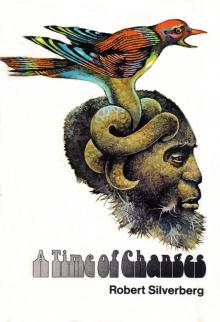 A Time of Changes
A Time of Changes This Way to the End Times: Classic Tales of the Apocalypse
This Way to the End Times: Classic Tales of the Apocalypse Beyond the Gate of Worlds
Beyond the Gate of Worlds Lord Valentine's Castle
Lord Valentine's Castle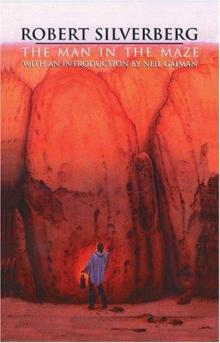 The Man in the Maze
The Man in the Maze Tales of Majipoor
Tales of Majipoor Time of the Great Freeze
Time of the Great Freeze The Collected Stories of Robert Silverberg, Volume 3: Something Wild Is Loose: 1969-72
The Collected Stories of Robert Silverberg, Volume 3: Something Wild Is Loose: 1969-72 Planet of Death
Planet of Death Trips: The Collected Stories of Robert Silverberg, Volume Four
Trips: The Collected Stories of Robert Silverberg, Volume Four In the Beginning: Tales From the Pulp Era
In the Beginning: Tales From the Pulp Era Hot Sky at Midnight
Hot Sky at Midnight Valentine Pontifex
Valentine Pontifex Up the Line
Up the Line Thorns
Thorns Amanda and the Alien
Amanda and the Alien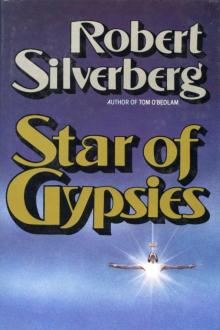 Star of Gypsies
Star of Gypsies Nightwings
Nightwings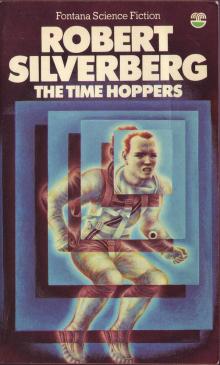 The Time Hoppers
The Time Hoppers Blood on the Mink
Blood on the Mink Dying Inside
Dying Inside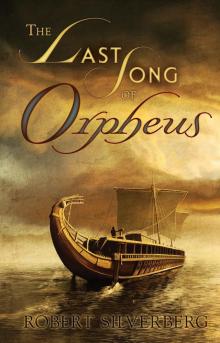 The Last Song of Orpheus
The Last Song of Orpheus The King of Dreams
The King of Dreams The Stochastic Man
The Stochastic Man The Collected Stories of Robert Silverberg, Volume Seven: We Are for the Dark
The Collected Stories of Robert Silverberg, Volume Seven: We Are for the Dark The Millennium Express: The Collected Stories of Robert Silverberg, Volume Nine
The Millennium Express: The Collected Stories of Robert Silverberg, Volume Nine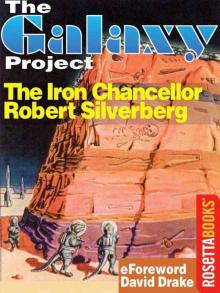 The Iron Chancellor
The Iron Chancellor Lord Prestimion
Lord Prestimion To Open the Sky
To Open the Sky The World Inside
The World Inside Chains of the Sea
Chains of the Sea The Collected Stories of Robert Silverberg, Volume Five: The Palace at Midnight
The Collected Stories of Robert Silverberg, Volume Five: The Palace at Midnight Postmark Ganymede
Postmark Ganymede The Second Trip
The Second Trip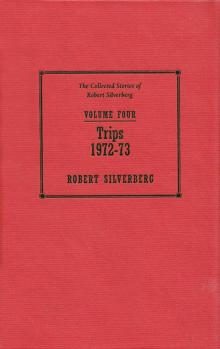 The Collected Stories of Robert Silverberg, Volume 4: Trips: 1972-73
The Collected Stories of Robert Silverberg, Volume 4: Trips: 1972-73 Son of Man
Son of Man Tom O'Bedlam
Tom O'Bedlam To the Land of the Living
To the Land of the Living To Be Continued: The Collected Stories of Robert Silverberg, Volume One
To Be Continued: The Collected Stories of Robert Silverberg, Volume One Shadrach in the Furnace
Shadrach in the Furnace The Chalice of Death: Three Novels of Mystery in Space
The Chalice of Death: Three Novels of Mystery in Space The Queen of Springtime
The Queen of Springtime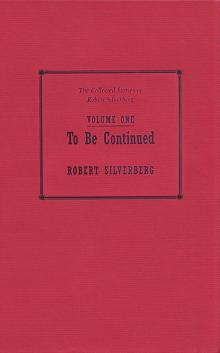 To Be Continued 1953-1958
To Be Continued 1953-1958 Legends
Legends Roma Eterna
Roma Eterna To Live Again
To Live Again At Winter's End
At Winter's End Needle in a Timestack
Needle in a Timestack To Live Again and the Second Trip: The Complete Novels
To Live Again and the Second Trip: The Complete Novels Lord of Darkness
Lord of Darkness The Mountains of Majipoor
The Mountains of Majipoor The World Outside
The World Outside The Alien Years
The Alien Years The Book of Skulls
The Book of Skulls The Face of the Waters
The Face of the Waters Gilgamesh the King
Gilgamesh the King The Collected Stories of Robert Silverberg, Volume 6: Multiples: 1983-87
The Collected Stories of Robert Silverberg, Volume 6: Multiples: 1983-87 The Happy Unfortunate
The Happy Unfortunate Three Survived
Three Survived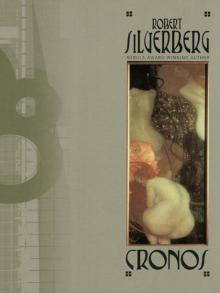 Cronos
Cronos Tower of Glass
Tower of Glass Legends II
Legends II The Planet Killers
The Planet Killers The Collected Stories of Robert Silverberg, Volume 2: To the Dark Star: 1962-69
The Collected Stories of Robert Silverberg, Volume 2: To the Dark Star: 1962-69 Downward to the Earth
Downward to the Earth Lord Valentine's Castle: Book One of the Majipoor Cycle
Lord Valentine's Castle: Book One of the Majipoor Cycle Hot Times in Magma City, 1990-95
Hot Times in Magma City, 1990-95 Hunt the Space-Witch! Seven Adventures in Time and Space
Hunt the Space-Witch! Seven Adventures in Time and Space Majipoor Chronicles
Majipoor Chronicles The Robert Silverberg Science Fiction Megapack(r)
The Robert Silverberg Science Fiction Megapack(r) Starman's Quest
Starman's Quest Car Sinister
Car Sinister Worlds of Maybe
Worlds of Maybe Fantasy The Best of 2001
Fantasy The Best of 2001 Revolt on Alpha C
Revolt on Alpha C Homefaring
Homefaring The Pardoner's Tale
The Pardoner's Tale Sailing to Byzantium - Six Novellas
Sailing to Byzantium - Six Novellas The Chalice of Death
The Chalice of Death Sundance
Sundance A Tip on a Turtle
A Tip on a Turtle Nebula Awards Showcase 2001: The Year's Best SF and Fantasy Chosen by the Science Fiction and Fantasy Writers of America
Nebula Awards Showcase 2001: The Year's Best SF and Fantasy Chosen by the Science Fiction and Fantasy Writers of America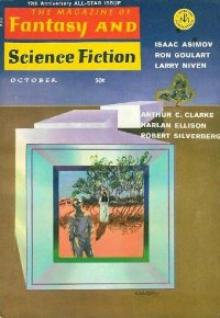 The Fangs of the Trees
The Fangs of the Trees The Palace at Midnight: The Collected Work of Robert Silverberg, Volume Five
The Palace at Midnight: The Collected Work of Robert Silverberg, Volume Five The Millennium Express - 1995-2009 - The Collected Stories of Robert Silverberg Volume Nine
The Millennium Express - 1995-2009 - The Collected Stories of Robert Silverberg Volume Nine Book of Skulls
Book of Skulls Passengers
Passengers Something Wild is Loose - 1969–72 - The Collected Stories of Robert Silverberg Volume Three
Something Wild is Loose - 1969–72 - The Collected Stories of Robert Silverberg Volume Three Multiples
Multiples Starborne
Starborne The Masks of Time
The Masks of Time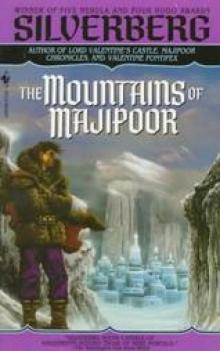 The Mountains of Majipoor m-8
The Mountains of Majipoor m-8 Multiples (1983-87)
Multiples (1983-87) Those Who Watch
Those Who Watch In the Beginning
In the Beginning Earth Is The Strangest Planet
Earth Is The Strangest Planet Collision Course
Collision Course Neutral Planet
Neutral Planet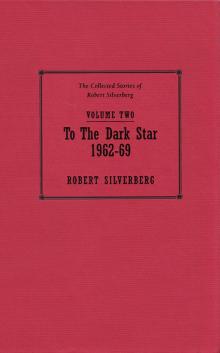 To the Dark Star - 1962–69 - The Collected Stories of Robert Silverberg Volume Two
To the Dark Star - 1962–69 - The Collected Stories of Robert Silverberg Volume Two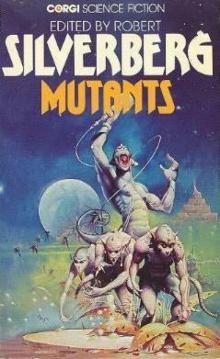 Mutants
Mutants Sailing to Byzantium
Sailing to Byzantium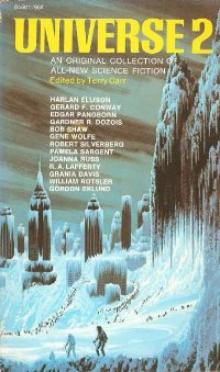 When We Went to See the End of the World
When We Went to See the End of the World Robert Silverberg The Science Fiction Hall Of Fame Volume One, 1929-1964
Robert Silverberg The Science Fiction Hall Of Fame Volume One, 1929-1964 To Be Continued - 1953–58 - The Collected Stories of Robert Silverberg Volume One
To Be Continued - 1953–58 - The Collected Stories of Robert Silverberg Volume One Valentine Pontifex m-3
Valentine Pontifex m-3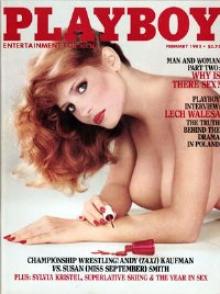 Gianni
Gianni Majipoor Chronicles m-2
Majipoor Chronicles m-2 We Are for the Dark (1987-90)
We Are for the Dark (1987-90) Waiting for the Earthquake
Waiting for the Earthquake Fantasy: The Best of 2001
Fantasy: The Best of 2001 How It Was When the Past Went Away
How It Was When the Past Went Away Beauty in the Night
Beauty in the Night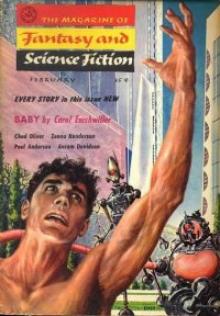 The Man Who Never Forgot
The Man Who Never Forgot The Book of Changes m-9
The Book of Changes m-9 Lord Valentine's Castle m-1
Lord Valentine's Castle m-1 This Way to the End Times
This Way to the End Times Queen of Springtime
Queen of Springtime Legends-Volume 3 Stories by the Masters of Modern Fantasy
Legends-Volume 3 Stories by the Masters of Modern Fantasy The Palace at Midnight - 1980–82 - The Collected Stories of Robert Silverberg Volume Five
The Palace at Midnight - 1980–82 - The Collected Stories of Robert Silverberg Volume Five Something Wild is Loose: The Collected Stories of Robert Silverberg, Volume Three
Something Wild is Loose: The Collected Stories of Robert Silverberg, Volume Three Multiples - 1983–87 - The Collected Stories of Robert Silverberg Volume Six
Multiples - 1983–87 - The Collected Stories of Robert Silverberg Volume Six Alaree
Alaree Three Survived: A Science Fiction Novel
Three Survived: A Science Fiction Novel Defenders of the Frontier
Defenders of the Frontier The New Springtime
The New Springtime We Are for the Dark - 1987–90 - The Collected Stories of Robert Silverberg Volume Seven
We Are for the Dark - 1987–90 - The Collected Stories of Robert Silverberg Volume Seven The Science Fiction Hall of Fame, Volume One 1929-1964--The Greatest Science Fiction Stories of All Time Chosen by the Members of the Science Fiction Writers of America
The Science Fiction Hall of Fame, Volume One 1929-1964--The Greatest Science Fiction Stories of All Time Chosen by the Members of the Science Fiction Writers of America Master Of Life And Death
Master Of Life And Death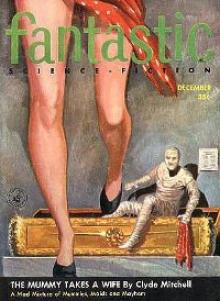 Choke Chain
Choke Chain Sorcerers of Majipoor m-4
Sorcerers of Majipoor m-4 Absolutely Inflexible
Absolutely Inflexible Trips - 1962–73 - The Collected Stories of Robert Silverberg Volume Four
Trips - 1962–73 - The Collected Stories of Robert Silverberg Volume Four Hot Times in Magma City - 1990-95 - The Collected Stories of Robert Silverberg Volume Eight
Hot Times in Magma City - 1990-95 - The Collected Stories of Robert Silverberg Volume Eight Far Horizons
Far Horizons The Queen of Springtime ns-2
The Queen of Springtime ns-2 The Seventh Science Fiction Megapack
The Seventh Science Fiction Megapack Invaders From Earth
Invaders From Earth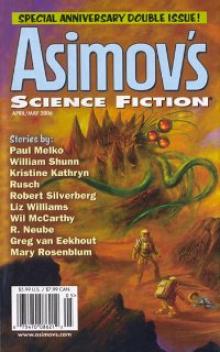 Hanosz Prime Goes To Old Earth
Hanosz Prime Goes To Old Earth The Macauley Circuit
The Macauley Circuit Science Fiction: The Best of 2001
Science Fiction: The Best of 2001 To the Dark Star: The Collected Stories of Robert Silverberg, Volume Two
To the Dark Star: The Collected Stories of Robert Silverberg, Volume Two Stochastic Man
Stochastic Man Legends: Stories By The Masters of Modern Fantasy
Legends: Stories By The Masters of Modern Fantasy To Live Again And The Second Trip
To Live Again And The Second Trip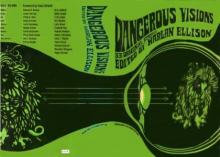 Flies
Flies The Silent Invaders
The Silent Invaders Ship-Sister, Star-Sister
Ship-Sister, Star-Sister